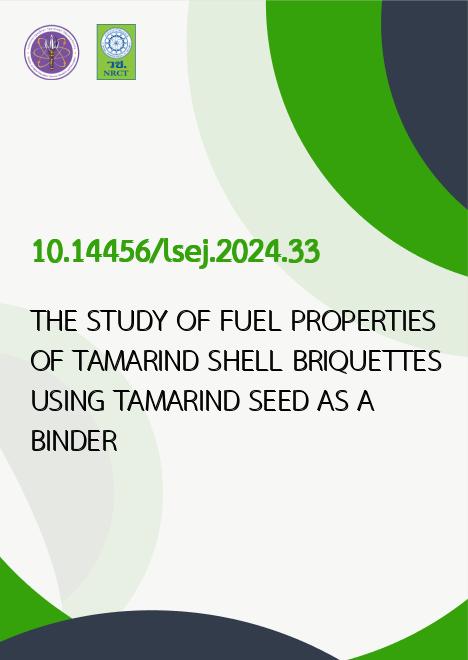
|
THE STUDY OF FUEL PROPERTIES OF TAMARIND SHELL BRIQUETTES USING TAMARIND SEED AS A BINDER |
|---|---|
| รหัสดีโอไอ | |
| Creator | Montree Wongsiriwittaya |
| Title | THE STUDY OF FUEL PROPERTIES OF TAMARIND SHELL BRIQUETTES USING TAMARIND SEED AS A BINDER |
| Contributor | Wirawut Lephon, Sanit Phinsakul |
| Publisher | Pibulsongkram Rajabhat University |
| Publication Year | 2567 |
| Journal Title | Life Sciences and Environment Journal |
| Journal Vol. | 25 |
| Journal No. | 2 |
| Page no. | 442-453 |
| Keyword | tamarind husk, hight heating value, physical properties |
| URL Website | https://ph01.tci-thaijo.org/index.php/psru/index |
| Website title | Life Sciences and Environment Journal |
| ISSN | 2773-9201 |
| Abstract | This article investigates the thermal and physical properties of fuel rods made from tamarind peels with particle sizes of 1 mm and 3 mm. The fuel rods were formed by extruding a mixture of tamarind peels, crushed tamarind pulp, and water in a ratio of 90:5:5 by weight. This process produced rods with a diameter of 40 mm and a length of 60 mm, using a hand-operated charcoal press. The thermal and physical properties of the fuel rod samples were subsequently tested. The findings revealed that the fuel rod with a particle size of 3 mm exhibited the high heating value of 17.05 MJ/kg. A comparative analysis with the fuel rod made from 1 mm particles showed only slight differences in the experimental results, indicating that particle size had minimal effect on the high heating value. The next phase involved physical testing of the fuel rods, demonstrating that the durability of the fuel rods at each ratio met the DIN EN 14961-2 standard, with less than 2.5% rupture for both sizes. Additionally, density tests of the fuel blocks in all experiments showed values that met the DIN 51731 standard, which requires a density of at least 1,000 kg/m³. Finally, the moisture re-covery value of the fuel rods was lower than that of the tamarind peel sample, at-tributed to the use of a binder and the blockage of pores, resulting in low moisture absorption. |